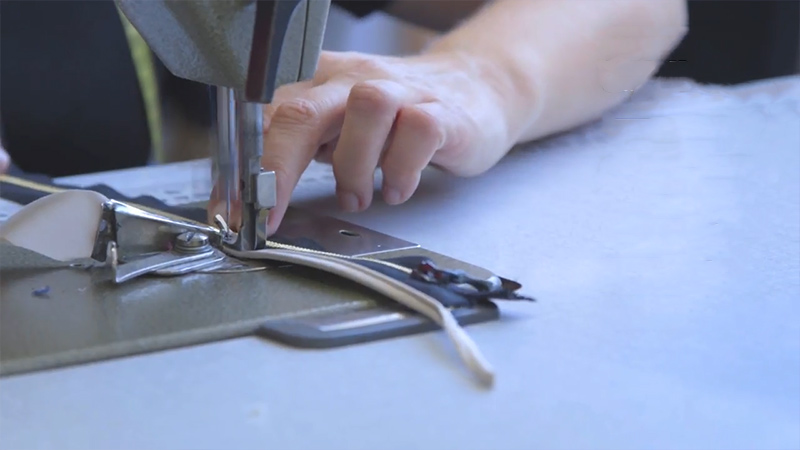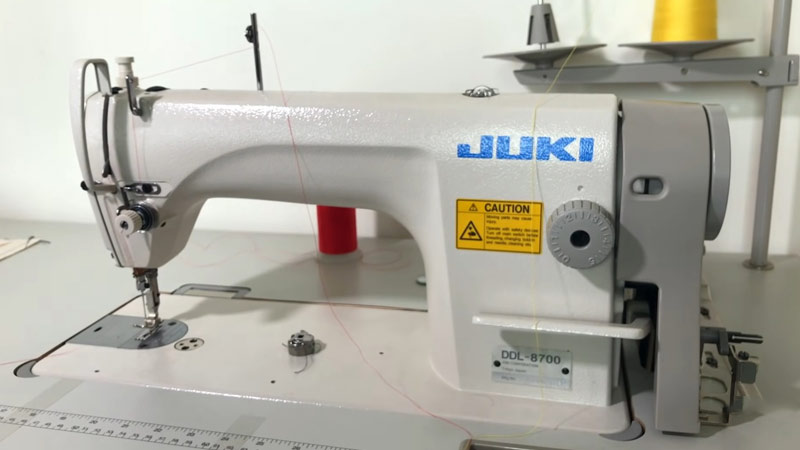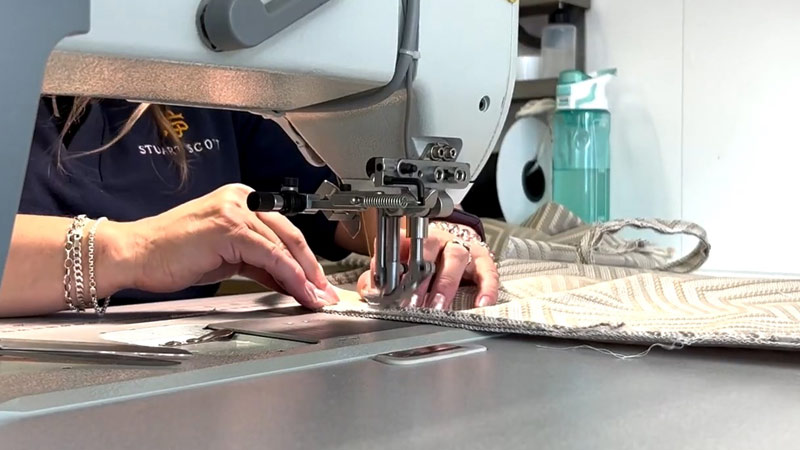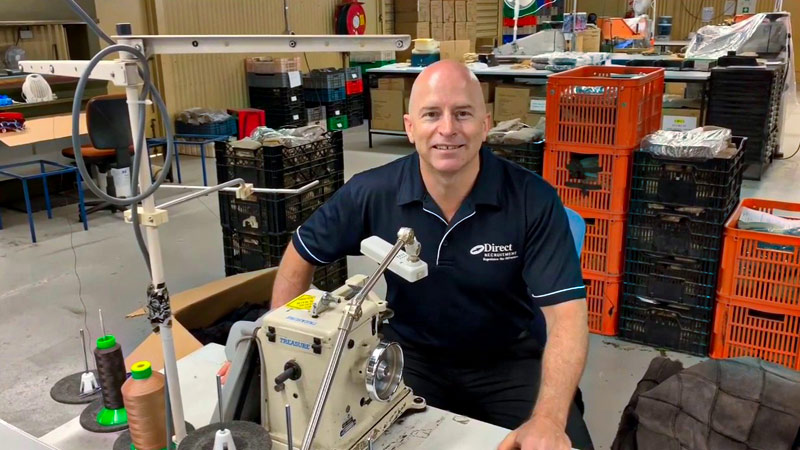A sewing machinist, a skilled artisan in the realm of textiles, wields the power of precision and creativity to transform plain fabrics into exquisite garments, accessories, and home textiles.
This versatile craftsman operates sewing machines with finesse, breathing life into fashion designs and functional products.
Guided by patterns and specifications, they expertly cut, stitch, and assemble diverse fabrics, from delicate silks to rugged denims.
In a world of patterns, buttons, zippers, and threads, sewing machinists ensure that every seam and stitch meets impeccable standards of quality.
With an eye for detail and a flair for innovation, they stand at the heart of the textile industry’s artistry and production.

What Does Sewing Machinist Mean? -Responsibilities
A sewing machinist, often simply referred to as a machinist, is a skilled professional who specializes in operating sewing machines and creating various types of textile products.
This occupation plays a crucial role in the fashion and textile industry, as sewing machinists are responsible for turning fabric into finished garments, accessories, or other textile items.
Their work involves precision, attention to detail, and a deep understanding of sewing techniques and machinery.
Here are some key aspects of what a sewing machinist does:
Operating Sewing Machines
Sewing machinists are proficient in operating a variety of sewing machines, including industrial and domestic models.
They are responsible for setting up and adjusting the machine settings to achieve the desired stitching patterns, lengths, and tensions.
Reading Patterns and Specifications
Sewing machinists often work from patterns, designs, or technical specifications provided by fashion designers, manufacturers, or pattern makers.
They must have the ability to interpret these instructions accurately and translate them into finished products.
Fabric Preparation
Before sewing, machinists may be responsible for cutting fabric according to the pattern, marking pieces for assembly, and ensuring the fabric is clean and free from defects.
They must also be skilled in handling different types of fabrics, such as cotton, silk, denim, leather, and synthetic materials.
Stitching and Assembly
The core of a sewing machinist’s work involves sewing fabric pieces together, attaching zippers, buttons, and other fasteners, and adding decorative elements like embroidery or trim. They must maintain consistent seam allowances and stitch quality throughout the project.
Quality Control
Ensuring the quality of the finished product is paramount. Sewing machinists are responsible for inspecting their work for any defects, irregularities, or inconsistencies. They may need to make adjustments or rework areas that do not meet the required standards.
Troubleshooting
Sewing machinists should have a good understanding of the mechanics of sewing machines and be able to diagnose and fix minor issues, such as thread tension problems, jammed needles, or broken threads.
Collaboration
In larger production settings, sewing machinists often work as part of a team. They need to communicate effectively with other team members, including pattern makers, cutters, and quality control inspectors, to ensure a smooth and efficient production process.
Adaptability
Sewing machinists may work on a wide range of products, from clothing and accessories to upholstery and home textiles. They need to adapt to different sewing techniques, fabrics, and styles based on the specific project requirements.
Creativity and Innovation
While sewing machinists primarily follow established patterns and designs, they may also have opportunities to contribute their creative ideas for embellishments or modifications, especially in custom or small-scale production.
What Skills Should Have a Sewing Machinist?

A skilled sewing machinist possesses a combination of technical and practical skills that enable them to excel in their craft.
Here are the essential skills a sewing machinist should have:
Sewing Machine Proficiency
A skilled sewing machinist not only operates sewing machines but also understands their mechanics. They can adjust settings such as stitch length, tension, and speed to achieve precise results on various fabrics.
Pattern Interpretation
Beyond reading patterns, they can also make adjustments or modifications to patterns as needed to accommodate specific design requests or alterations.
Fabric Knowledge
This includes understanding fabric characteristics like stretch, weight, and texture. Machinists should know how to handle delicate fabrics like chiffon or satin differently from heavy materials like denim or leather.
Stitching Techniques
In addition to the basics, they should be proficient in specialized techniques like basting, blind hemming, or quilting, depending on the project’s requirements.
Attention to Detail
A meticulous eye for detail ensures that seams are perfectly aligned, corners are sharp, and stitches are consistent throughout a project.
Quality Control
Beyond identifying defects, they should be skilled in repairing or altering garments to meet client expectations, whether it’s fixing a misaligned seam or replacing a broken zipper.
Problem-Solving Skills
Troubleshooting goes beyond addressing machine issues. A sewing machinist may need to devise creative solutions to unexpected challenges that arise during production.
Adaptability
Versatility in handling a wide range of fabrics and sewing techniques is crucial. For example, they should be equally comfortable sewing a delicate bridal gown as they are crafting a durable pair of work jeans.
Creativity
In custom or artistic sewing, machinists may be asked to contribute design ideas, select decorative stitches, or apply embellishments like sequins or embroidery.
Time Management
Effective time management is essential to meet production quotas and deadlines, especially in high-demand environments like garment factories.
Communication
Clear and open communication with team members ensures everyone is on the same page, preventing errors and reducing rework.
Dexterity
Precision and nimbleness are required for intricate work, such as sewing on buttons or creating fine details in embroidery.
Ergonomics
Understanding the importance of ergonomics helps prevent repetitive strain injuries, which can be common in the sewing profession.
Safety Awareness
Awareness of safety guidelines is crucial, including proper handling of sharp tools like scissors and rotary cutters and the safe operation of sewing machines.
Continuous Learning
Staying updated with the latest trends and technologies in sewing can lead to improved efficiency and the ability to take on more diverse projects, contributing to career growth and success as a sewing machinist.
How Important Is the Role of a Sewing Machinist?

The role of a sewing machinist is of paramount importance in various industries, particularly fashion, textiles, and upholstery.
Their contributions are significant for these reasons:
Craftsmanship
Sewing machinists are skilled artisans who bring creativity, precision, and attention to detail to their work. They are responsible for turning fabric into finished products, making them crucial contributors to the quality and aesthetics of the final items.
Manufacturing
In the garment and textile industries, sewing machinists are the backbone of production. They are responsible for mass-producing clothing, accessories, and textiles, ensuring that products are made efficiently and in line with industry standards.
Customization
For bespoke and custom-made items, sewing machinists play a pivotal role in bringing unique designs to life. They work closely with clients and designers to execute personalized creations.
Repair and Alterations
Beyond creating new items, sewing machinists are often relied upon for clothing repairs and alterations. Their skills are essential for extending the lifespan of garments and making them fit better.
Sustainability
In an era of increasing focus on sustainability, sewing machinists contribute to reducing textile waste. They can repurpose, mend, or upcycle clothing, helping to reduce the environmental impact of fast fashion.
Economic Impact
Sewing machinists are essential to local and global economies. They contribute to the employment of millions of people worldwide and are integral to the success of countless businesses, from small tailoring shops to large-scale factories.
Artistry and Innovation
Beyond technical skills, sewing machinists often bring creativity and innovation to their work. They experiment with new techniques, materials, and designs, pushing the boundaries of what is possible in fashion and textiles.
Cultural and Historical Significance
Sewing and textile work have deep cultural and historical significance. Many traditional and indigenous garments are crafted by skilled sewing machinists who preserve and pass down valuable cultural heritage.
Versatility
Sewing machinists can adapt to various projects, from creating intricate wedding gowns to manufacturing functional workwear. Their versatility makes them invaluable across a wide spectrum of industries and applications.
Sewing Machinist Jobs

Sewing machinist jobs are available in various industries and settings, and they can offer a range of opportunities for individuals with sewing skills.
Here are some common types of sewing machinist jobs:
Garment Manufacturing
Many sewing machinists work in garment manufacturing companies. They are responsible for mass-producing clothing items based on patterns and specifications. Job roles in this sector may include sewing machine operator, seamstress, or production worker.
Tailoring and Alterations
Some sewing machinists work in tailoring shops or alterations businesses. They provide services such as hemming, mending, and altering clothing to fit clients’ specific measurements and preferences.
Fashion Design Studios
In fashion design studios, sewing machinists collaborate with designers to bring their creative visions to life. They may work on prototypes and sample garments for fashion collections.
Costume and Theater Production
Sewing machinists in this field create costumes and wardrobe pieces for theaters, film productions, and cosplay events. These roles often require expertise in historical or thematic costume design.
Home Textiles
Some sewing machinists work in the production of home textiles like curtains, drapes, bedding, and upholstery. They may be employed by textile manufacturers or interior design firms.
Bridal and Formalwear
Specialized sewing machinists work on bridal gowns and formalwear. These garments often require intricate detailing and delicate fabrics.
Custom Clothing
Sewing machinists who offer custom clothing services create one-of-a-kind pieces tailored to individual clients’ preferences, measurements, and styles.
Craft and Artisanal Businesses
Some artisans and craft businesses employ sewing machinists to create handmade products such as bags, accessories, and home decor items.
Sewing Machine Sales and Repair
In addition to production and design roles, some sewing machinists work in sales or repair positions, where they sell sewing machines, and accessories, and provide maintenance and repair services.
Freelance and Self-Employed
Many sewing machinists choose to work as freelancers or start their sewing businesses, taking on a variety of projects, from alterations to custom sewing.
FAQS
What Is a Sewing Machinist Salary?
The salary of a sewing machinist can vary widely depending on factors such as location, experience, and the specific industry, but in general, it ranges from $20,000 to $40,000 annually.
Are sewing machinists required to have formal education or training?
While formal education in sewing or fashion design can be beneficial, many sewing machinists acquire their skills through on-the-job training, apprenticeships, or vocational programs.
What are the physical demands of being a sewing machinist?
Sewing machinists often spend long hours seated at sewing machines, which can lead to physical strain.
Do sewing machinists work on individual projects or in assembly-line settings?
Sewing machinists can work in various settings, from small tailoring shops where they handle individual projects to large-scale garment factories where they are part of an assembly-line production team.
Is there room for career advancement for sewing machinists?
Yes, sewing machinists can advance their careers by gaining experience, improving their skills, and taking on roles such as lead machinist, supervisor, or pattern maker.
Where Is Sew Rite Alterations?
The Sew Rite Alterations is located at 929 Kittitas St, Wenatchee, WA 98801.
To Recap
In fashion and textile industries, sewing machinists are the master weavers, diligently stitching together the threads of creativity and functionality.
Their expertise in operating sewing machines, interpreting patterns, and handling diverse fabrics is the foundation upon which fashion visions come to life.
Beyond the mechanical aspects, these artisans possess an innate ability to transform ordinary textiles into wearable art, upholstery, and more.
Their role bridges tradition and innovation, with an unwavering commitment to quality and precision.
As the unsung heroes behind the seams, sewing machinists play an indispensable role in shaping the garments and textiles that adorn our lives, embodying the fusion of skill, artistry, and craftsmanship.
Leave a Reply